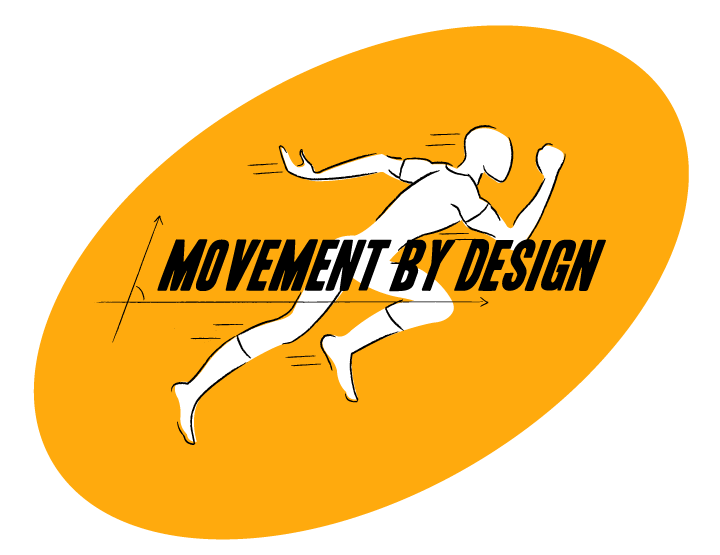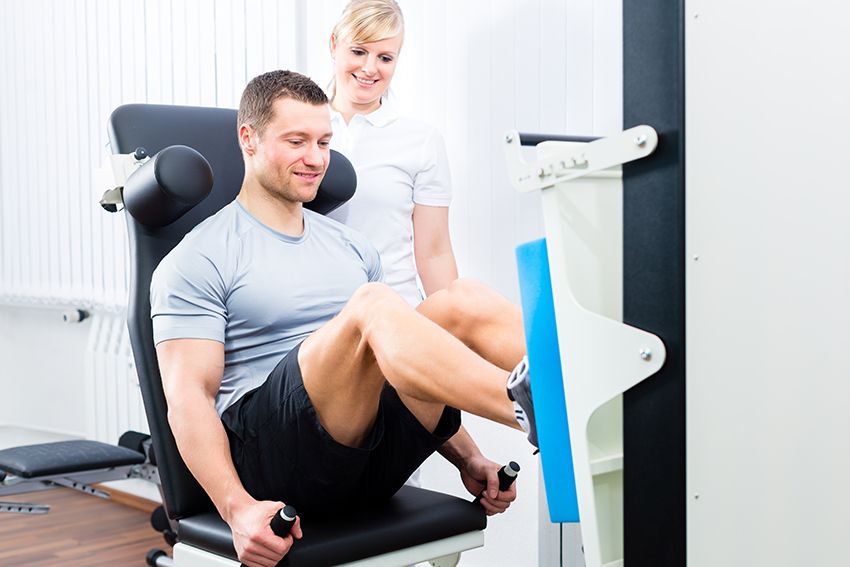The Perfect Body: A Myth or a Mindset?
What is the perfect body? For decades, society has defined it through changing beauty standards, media portrayals, and fitness trends. But the truth is, there is no single definition of the perfect body—because perfection is subjective and deeply personal.
Beyond Aesthetics: A Functional Perspective
Rather than chasing an idealized appearance, a truly “perfect” body is one that functions optimally. It is strong, resilient, and capable of performing daily activities without pain or limitations. Good posture, mobility, and endurance matter far more than an arbitrary number on a scale or a specific body shape.
Health Over Hype
Health is the foundation of a perfect body. Balanced nutrition, regular exercise, quality sleep, and stress management contribute to a body that not only looks good but also feels and performs well. Instead of striving for unrealistic standards, focusing on holistic well-being leads to a sustainable and fulfilling lifestyle.
Why One Body Type Isn’t Ideal for All
Every individual is unique, with different genetics, lifestyles, and physical needs. A body type that is ideal for one person may not be suitable for another. For example, an elite marathon runner and a powerlifter have vastly different physiques, each optimized for their specific sport. The same applies to everyday individuals—some may thrive with a lean, agile frame, while others may require a stronger, more muscular build for their daily activities.
Cultural, genetic, and environmental factors also play a role in determining body composition. What is considered “ideal” in one culture may not be the standard in another. The key is recognising that the perfect body is the one that supports your personal goals, health, and well-being rather than fitting into a societal mould.
The Mental Shift: Embracing Individuality
A perfect body is one that aligns with your personal goals and lifestyle. Whether it’s strength, flexibility, endurance, or simply being pain-free, your ideal body is unique to you. Self-acceptance and self-care are the real markers of perfection.
Find Your Perfect Body at MBD
At Movement By Design, we believe in helping you achieve your version of the perfect body—one that moves well, feels great, and supports your lifestyle. Our expert team is here to guide you through personalized training, rehabilitation, and wellness programs tailored to your needs. Come to MBD in Colaba, South Mumbai, and find the way to your perfect body.
Conclusion
The perfect body isn’t about an external standard—it’s about how you feel in your own skin. When you prioritize health, movement, and self-love, you’re already living in your perfect body.
Understanding Andropause: The Male Menopause and How to Combat It
When we hear the word “menopause,” we naturally associate it with women. But did you know men experience their own version of hormonal changes as they age? Known as andropause, this condition is often overlooked and misunderstood, leaving many men unaware of what is happening to their bodies and minds. Let’s dive into what andropause is, how it affects men, and what can be done to combat it effectively.
What Is Andropause?
Andropause, often referred to as the “male menopause,” is a condition associated with the gradual decline in testosterone levels in men as they age. Testosterone, the primary male sex hormone, is responsible for a wide range of functions, including muscle mass, bone density, mood regulation, and sexual health.
Unlike menopause in women, where hormone levels drop significantly in a short span of time, testosterone levels decline slowly, often beginning around the age of 30 and continuing at a rate of about 1% per year. By the time men reach their 50s or 60s, these changes can manifest as noticeable physical, emotional, and mental symptoms.
Signs and Symptoms of Andropause
The symptoms of andropause vary but can significantly impact a man’s quality of life. These include:
- Fatigue and Low Energy: A common complaint, making it hard to stay active.
- Reduced Muscle Mass and Strength: Testosterone plays a crucial role in muscle maintenance.
- Increased Body Fat: Particularly around the abdomen, leading to changes in body composition.
- Low Libido and Sexual Dysfunction: A noticeable decline in sexual desire and performance.
- Mood Swings and Irritability: Hormonal changes can lead to emotional instability.
- Depression and Anxiety: Feelings of sadness or nervousness may increase.
- Sleep Disturbances: Poor sleep quality or insomnia can exacerbate other symptoms.
- Reduced Cognitive Function: Difficulty concentrating or experiencing “brain fog.”
Why Is Andropause Often Overlooked?
Despite being common, andropause is rarely talked about. Many men are unaware of it or dismiss their symptoms as a normal part of aging. Social stigma around discussing hormonal health and the assumption that menopause is solely a female issue further contribute to its invisibility.
How to Combat Andropause
While andropause is a natural part of aging, there are ways to manage its symptoms and improve overall well-being. Here’s how:
1. Adopt a Balanced Diet
- Focus on nutrient-dense foods such as lean proteins, healthy fats, and complex carbohydrates.
- Include testosterone-boosting foods like eggs, nuts, spinach, and avocados.
- Avoid excessive alcohol, sugar, and processed foods, which can worsen hormonal imbalances.
2. Stay Active with Exercise
- Strength Training: Builds muscle mass and improves testosterone production.
- Cardio Workouts: Supports cardiovascular health and reduces fat.
- Flexibility and Stress Relief: Incorporate yoga or Pilates to improve posture and reduce stress.
3. Manage Stress Levels
- Chronic stress increases cortisol, a hormone that suppresses testosterone.
- Practice mindfulness, meditation, or breathing exercises to lower stress levels.
4. Improve Sleep Quality
- Aim for 7–9 hours of quality sleep each night.
- Establish a consistent bedtime routine and reduce screen time before bed.
5. Consider Hormone Replacement Therapy (HRT)
- Testosterone Replacement Therapy (TRT) may be an option for men with significantly low levels of testosterone. Consult a healthcare professional to evaluate if this is right for you.
6. Stay Connected and Seek Support
- Talk openly with your partner or close friends about what you’re experiencing.
- Join support groups or forums for men going through similar challenges.
7. Schedule Regular Health Checkups
- Monitor testosterone levels and overall health with routine medical checkups. Early detection of low testosterone can help prevent more severe symptoms.
Why Awareness Is Key
One of the biggest challenges of andropause is the lack of awareness. Many men live with symptoms for years without understanding the underlying cause. By normalizing conversations about andropause, we can encourage men to seek help, embrace lifestyle changes, and combat its effects effectively.
Final Thoughts
Andropause is a natural but often misunderstood phase of life for men. Recognizing the symptoms and taking proactive steps to manage them can significantly enhance quality of life and overall well-being.
If you or someone you know is experiencing symptoms of andropause, remember: help is available, and addressing the issue is the first step toward feeling like yourself again. Stay informed, take control, and don’t hesitate to seek support.
Age is inevitable, but vitality is a choice!
Understanding Insurance for Physiotherapy in India
Physiotherapy has become an essential part of healthcare, aiding recovery from injuries, surgeries, and chronic conditions. However, many individuals are unaware of the insurance coverage available for physiotherapy treatments in India. Here’s what you need to know about navigating physiotherapy expenses and leveraging insurance benefits.
Is Physiotherapy Covered by Health Insurance in India?
Yes, many health insurance policies in India include physiotherapy coverage, but it often depends on the context of the treatment:
- Post-Hospitalization Coverage: Physiotherapy prescribed as part of post-hospitalization recovery (e.g., after surgery or trauma) is commonly covered for a specified period, typically 30–60 days.
- In-Patient Procedures: If physiotherapy is part of in-patient care during hospitalization, it is usually covered under the hospital bills.
- Standalone Coverage: Some comprehensive health plans now offer outpatient (OPD) benefits that include physiotherapy as part of the package.
Conditions for Coverage
Insurance coverage for physiotherapy is often subject to specific conditions:
- Medical Necessity: The treatment must be recommended by a doctor and supported by documentation.
- Policy Terms: Coverage varies across insurers and policies, so it’s crucial to review your plan’s inclusions and exclusions.
- Limitations on OPD: Outpatient physiotherapy coverage under OPD benefits may come with caps on the number of sessions or total reimbursement amount.
How to Claim Insurance for Physiotherapy
- Check Your Policy: Confirm if your insurance plan includes physiotherapy and under what conditions.
- Obtain a Prescription: A doctor’s recommendation and diagnosis are usually required for claims.
- Save Invoices: Retain bills and receipts from your physiotherapy sessions for reimbursement.
- Submit Claim: Follow the insurer’s claim procedure, ensuring all documents are complete.
Tips for Choosing a Policy with Physiotherapy Benefits
- Look for OPD Coverage: Some insurers, like Max Bupa, ICICI Lombard, and Star Health, offer plans with OPD benefits, covering outpatient physiotherapy.
- Comprehensive Health Plans: Opt for policies that cover a range of treatments, including rehabilitation therapies.
- Verify Network Clinics: Check if your insurer has tie-ups with physiotherapy clinics for cashless benefits.
Conclusion
Shoulder Injury and Rehabilitation: A Guide to Recovery and Resilience
The shoulder, one of the most mobile joints in the body, is essential for countless daily activities and athletic movements. Its unique range of motion, however, also makes it prone to injuries. Whether caused by overuse, poor posture, or trauma, shoulder injuries can significantly impact quality of life. Understanding these injuries and their rehabilitation process is key to regaining function and preventing future issues.


Common Shoulder Injuries
- Rotator Cuff Injuries
- Cause: Repetitive overhead motions or acute trauma.
- Symptoms: Pain, weakness, and difficulty lifting the arm.
- Shoulder Impingement
- Cause: Compression of tendons or bursa during overhead activities.
- Symptoms: Pain when lifting the arm or reaching above shoulder height.
- Frozen Shoulder (Adhesive Capsulitis)
- Cause: Inflammation of the shoulder joint capsule, often after immobility.
- Symptoms: Gradual stiffness and reduced range of motion.
- Dislocations and Instability
- Cause: The shoulder joint slipping out of its socket due to trauma or weak structures.
- Symptoms: Severe pain, swelling, and visible deformity.
- Labral Tears
- Cause: Damage to the cartilage surrounding the shoulder socket from overuse or sudden impact.
- Symptoms: Clicking sounds, pain, and decreased strength.
Rehabilitation for Shoulder Injuries
Rehabilitation plays a pivotal role in restoring shoulder function and preventing further damage. A comprehensive rehab program includes:
- Pain Management
- Use of ice, heat, and anti-inflammatory medications to reduce swelling and discomfort.
- Techniques like massage therapy or dry needling to relieve muscle tension.
- Range of Motion Exercises
- Gentle movements like pendulum swings and arm stretches to restore mobility.
- Strengthening Exercises
- Targeted exercises for the rotator cuff and scapular stabilizers, such as resistance band workouts.
- Postural Correction
- Education on maintaining proper posture to reduce stress on the shoulder joint.
- Physiotherapy
- Hands-on techniques from a physiotherapist to improve joint mobility and alleviate stiffness.
- Sports-Specific Training
- For athletes, rehabilitation includes drills to rebuild strength and coordination for their sport.
Preventing Shoulder Injuries
- Warm-Up Properly: Always include dynamic stretches and mobility exercises before physical activity.
- Strengthen Supporting Muscles: Regularly train the rotator cuff and scapular stabilizers.
- Use Proper Technique: Ensure correct form during exercises and sports activities.
- Avoid Overuse: Take rest days and cross-train to prevent repetitive stress on the joint.
- Maintain Good Posture: Avoid slouching to minimize strain on the shoulders.
When to Seek Help
If shoulder pain persists, worsens, or is accompanied by swelling, numbness, or limited motion, consult a healthcare professional. Early intervention with physiotherapy or medical treatment can prevent further complications and speed up recovery.
Conclusion
Shoulder injuries can be debilitating, but with the right approach to rehabilitation, recovery is achievable. Combining pain management, tailored exercises, and preventive strategies ensures not only healing but also long-term resilience. Whether you’re an athlete or someone recovering from a strain, taking proactive steps toward shoulder health can lead to a stronger, pain-free future.
Easy Guide To Common Causes of Back Pain
Back pain is a prevalent issue caused by a variety of lifestyle habits, medical conditions, and environmental factors. Prolonged poor posture, lack of activity, and repetitive movements are often key contributors. Here’s a simplified look at common causes of back pain, their implications, and preventive strategies.
Customized Physical Therapy Can Ease Lower Back Pain
Customized physical therapy may be a useful way to ease low back pain, which affects an estimated 31 million Americans a new study says. Researchers from La Trobe University observed that ‘many patients with low-back disorders persisting beyond 6 weeks do not recover.’
Therapy Found Effective for Carpal Tunnel Syndrome
Customized physical therapy may be a useful way to ease low back pain, which affects an estimated 31 million Americans a new study says. Researchers from La Trobe University observed that ‘many patients with low-back disorders persisting beyond 6 weeks do not recover.
Myth: Physical Therapy is only for Injuries and Accidents
Physical therapists do a lot more than just stretch or strengthen weak muscles after an injury or surgery. They are skilled at evaluating and diagnosing potential problems before they lead to more-serious injuries or disabling conditions from carpal tunnel syndrome or a frozen shoulder to chronic headaches or lower-back







